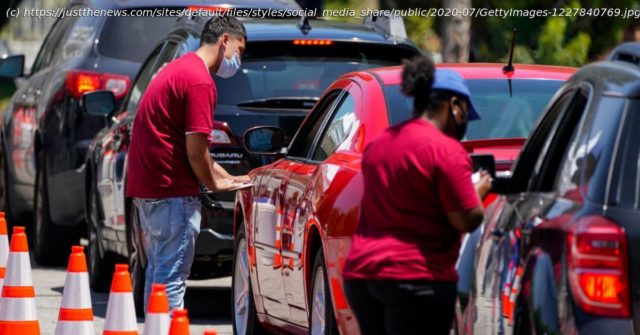Stay-at-home orders, face covering mandate appear to have had little effect on disease’s spread in Golden State.
Stay-at-home orders, face covering mandate appear to have had little effect on disease’s spread in Golden State. A recent rise in COVID-19 cases and deaths in California has raised questions about whether the state’s strict pandemic mitigation measures — including a long-running lockdown, shuttering of countless businesses, and statewide mask mandate — have had much effect in countering the virus spread there. Gov. Gavin Newsom was the first governor in the country to issue a statewide stay-at-home order, directing all residents on March 19 to refrain from leaving their homes indefinitely. A few days before, he had ordered all bars and nightclubs in the state to close down, and had also slashed indoor dining occupancy limits by half. By that time many schools across the state had closed down, and at the beginning of April Newsom indicated that they would remain closed for the rest of the academic year. In mid-June, about six months after the pandemic officially landed in California, Newsom ordered all state residents to begin wearing face coverings while in public. Despite such measures, daily new cases in the state have continued to increase, growing slowly throughout April and May before beginning to skyrocket in mid-June, according to official state data. The accelerating rise in cases would seem to belie the Newsom administration’s claims that their mitigation efforts were critical in stopping the spread of the coronavirus in California. Six weeks after it was imposed, even Newsom’s mask mandate appears to have had little effect on the transmission of COVID-19 in his state. ‘We will get to herd immunity sooner or later’ Newsom’s efforts were part of a widespread push by U. S. governors in March and early April to “flatten the curve,” locking down huge swaths of society in the hope of spreading out the initial wave of coronavirus transmission over a longer period of time, avoiding a crushing surge of cases in order to save healthcare systems from collapsing under the weight of major patient influx. Most U. S. health experts at the time said that such policies were preferable to one of unregulated “herd immunity,” in which the virus is allowed to work its way through society unabated until a sufficient number of individuals have recovered from it, rendering the disease much less capable of spreading to new hosts. Some medical authorities argued that the virus could claim millions of lives before a sufficient level of immunity was reached. Since March, many authorities have shifted their mitigation strategies, effectively declaring an indefinite campaign against COVID-19 that could incorporate widespread closures, lockdowns and stay-at-home orders at any given time depending on a governor’s assessment of his or her state’s outbreaks. Newsom himself declared in a May press conference that the state was “not going back to normal” and that it had entered a “new normal, with adaptations and modifications, until we get to immunity and a vaccine.” Dr. Martin Kulldorff, a population medicine scholar at Harvard, believes prolonged lockdowns until a vaccine is developed are inadvisable.
Home
United States
USA — Science California's spike in cases, deaths challenges conventional wisdom on COVID-19 lockdowns






